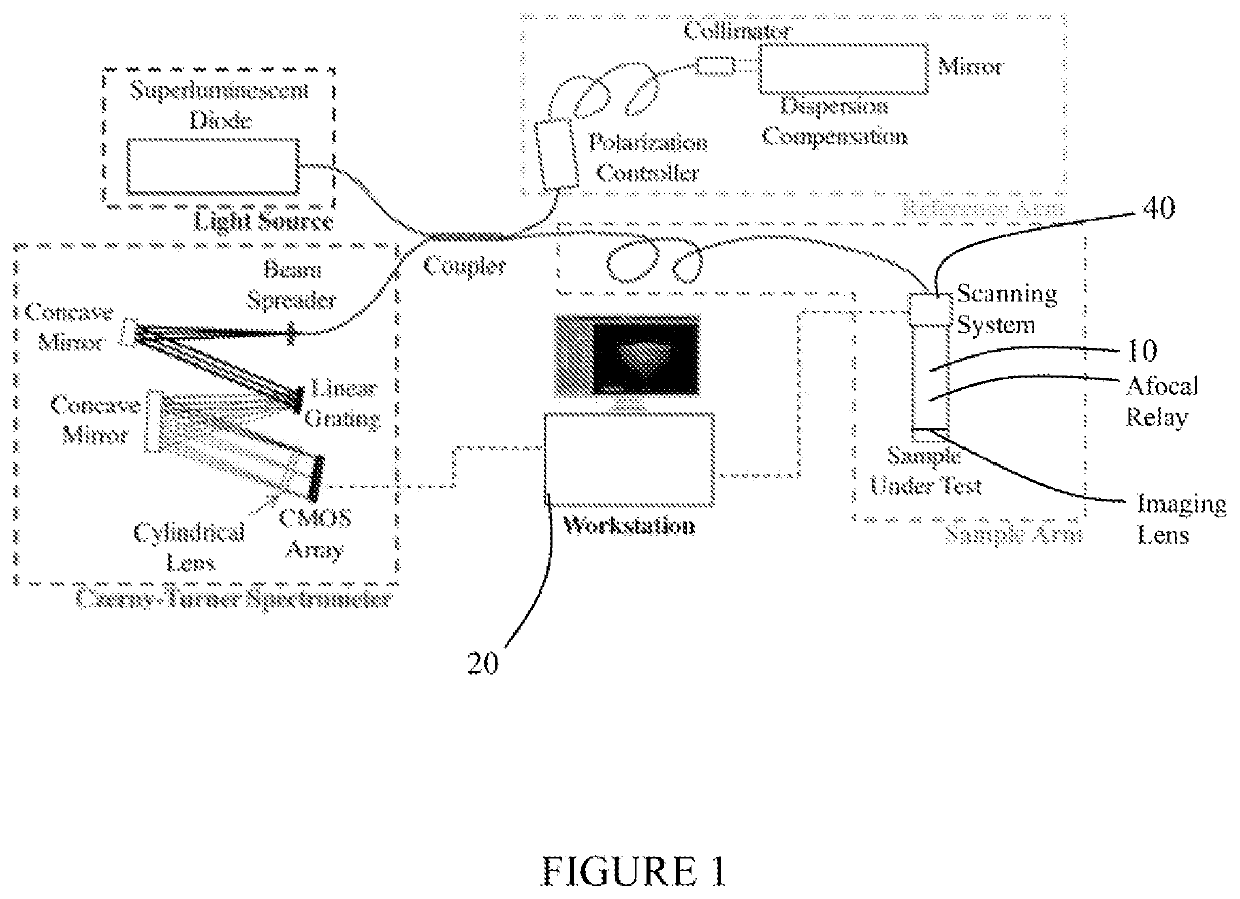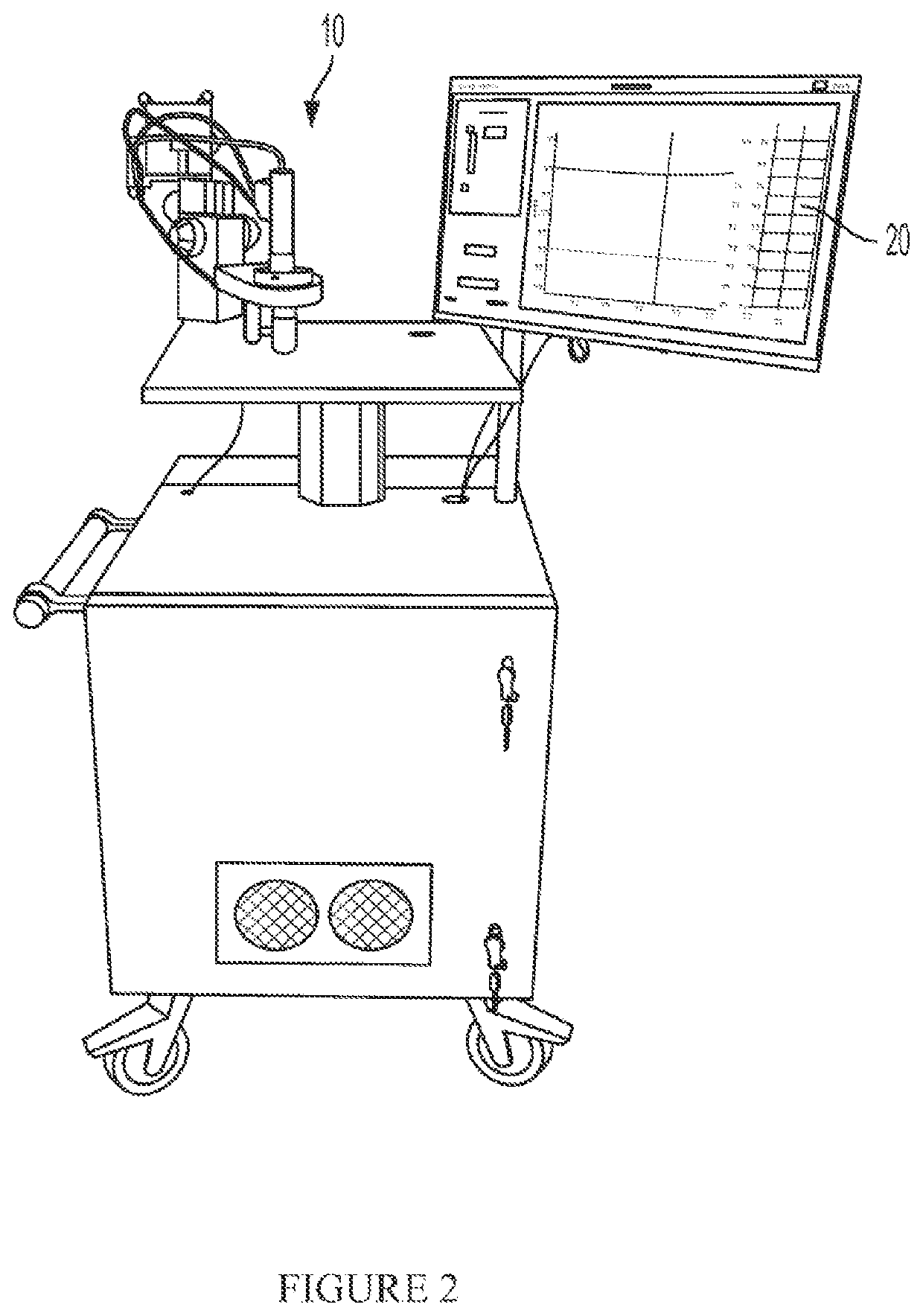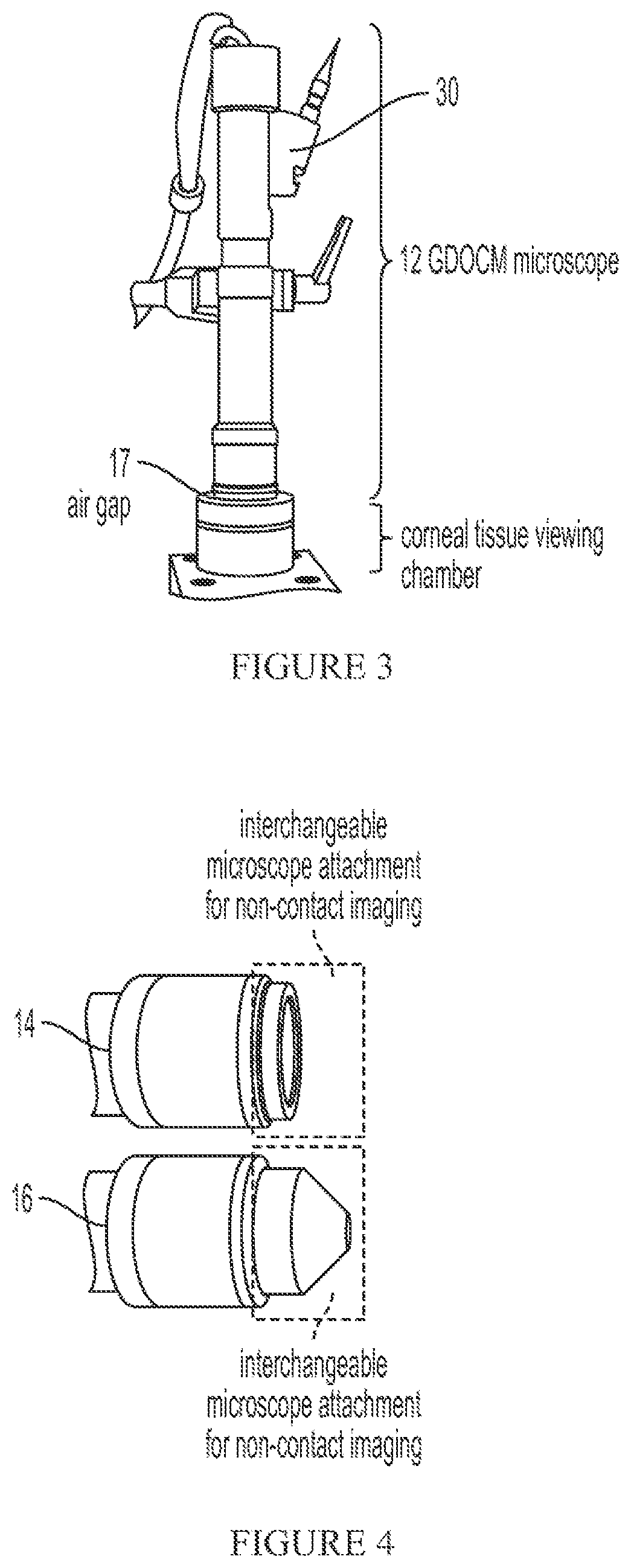Three dimensional corneal imaging with gabor-domain optical coherence microscopy
a gabor-domain optical coherence and gabordomain technology, applied in the field of three-dimensional corneal imaging with gabor-domain optical coherence microscopy, can solve the problems of insufficient accuracy of specular microscopy, poor regenerative capacity of endothelial cells in vivo, and introduce subjectivity and error. , to achieve the effect of enhancing accuracy and reducing bias in cell quantification
- Summary
- Abstract
- Description
- Claims
- Application Information
AI Technical Summary
Benefits of technology
Problems solved by technology
Method used
Image
Examples
Embodiment Construction
[0038]The present system provides for non-contact imaging of tissue, such as corneal tissue, through a viewing chamber with Gabor-domain optical coherence microscopy (GDOCM) over a larger field-of-view than specular microscopy (SM). A three dimensional (3D) image processing algorithm is applied to segment the endothelium and correct the corneal curvature (nonplanar orientation of the cells), resulting in artifact-free images of the flattened endothelium.
[0039]Although the present description is set forth in terms of tissue that includes corneal endothelial cells, it is understood the tissue can includes retinal cell mosaics, such as photoreceptors, retinal pigment epithelium (RPE) cells, or any other suitable cells. Further, it is understood that images of the tissue may be acquired ex vivo, in vivo, or in vitro.
[0040]Referring to FIG. 1, the present system includes a microscope 10 for generating image data and a workstation or controller 20 for processing the acquired image data. I...
PUM
 Login to View More
Login to View More Abstract
Description
Claims
Application Information
 Login to View More
Login to View More - R&D
- Intellectual Property
- Life Sciences
- Materials
- Tech Scout
- Unparalleled Data Quality
- Higher Quality Content
- 60% Fewer Hallucinations
Browse by: Latest US Patents, China's latest patents, Technical Efficacy Thesaurus, Application Domain, Technology Topic, Popular Technical Reports.
© 2025 PatSnap. All rights reserved.Legal|Privacy policy|Modern Slavery Act Transparency Statement|Sitemap|About US| Contact US: help@patsnap.com



